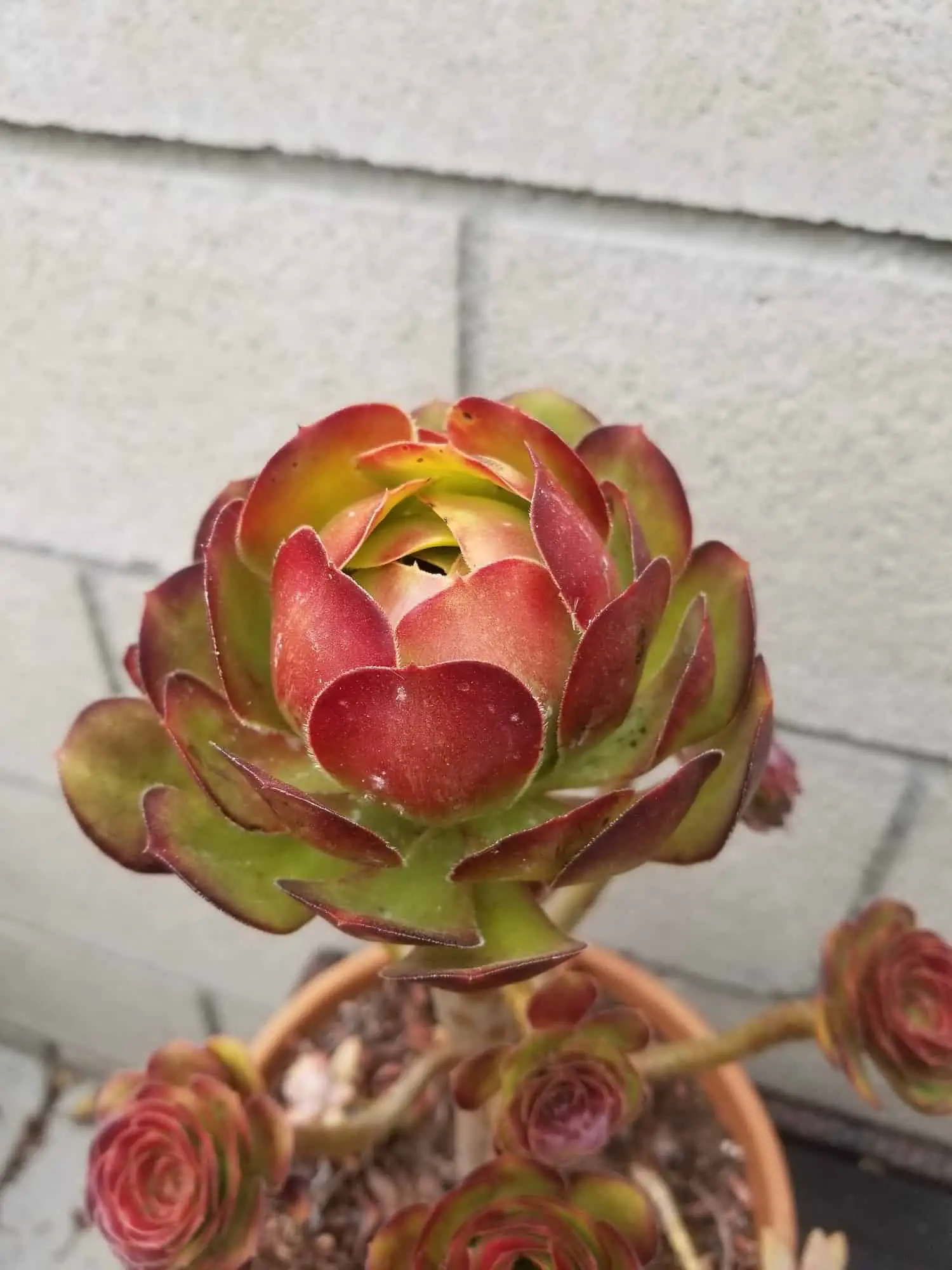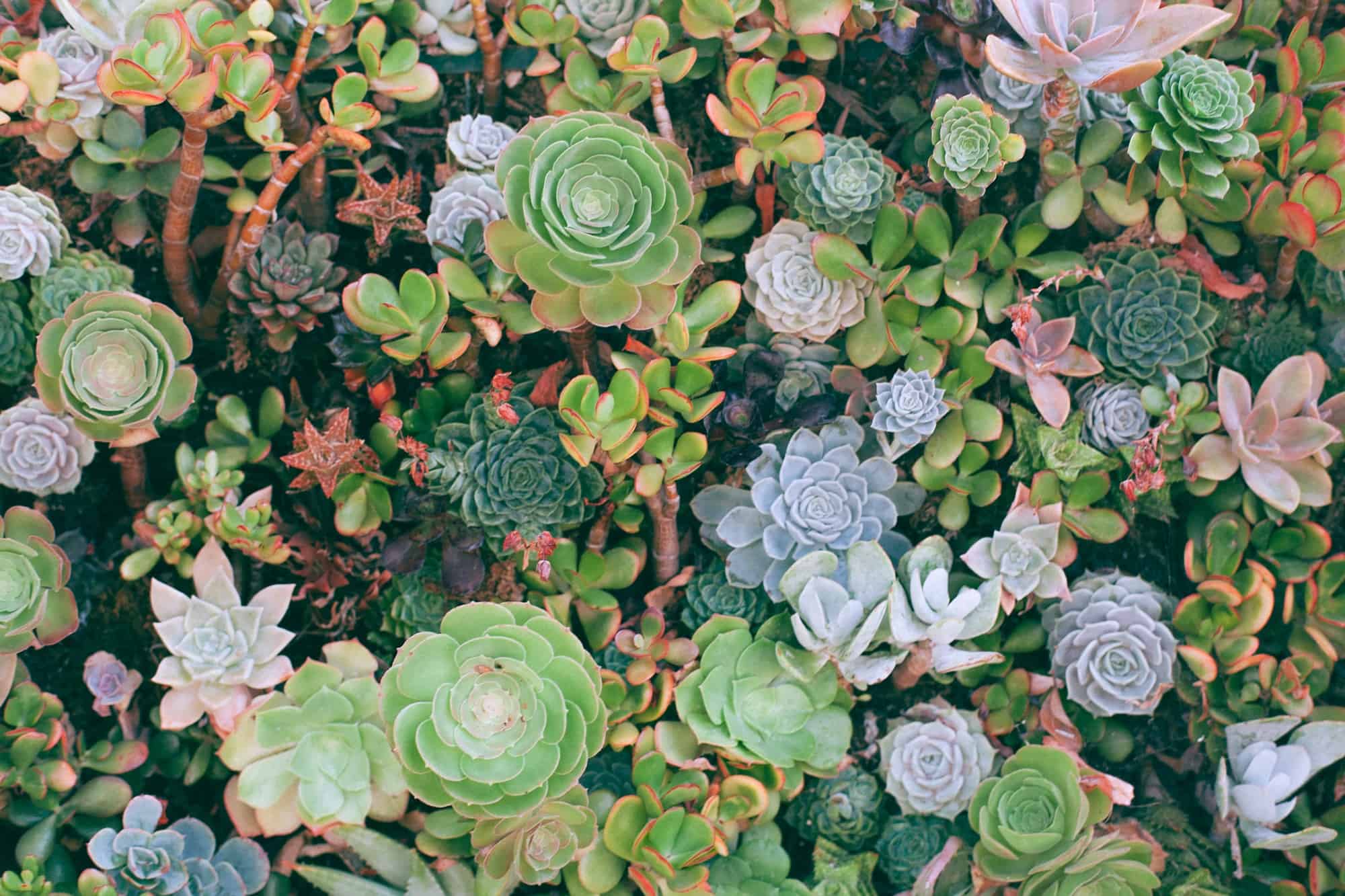One of the amazing things about succulents is that they look great all year. However, succulents do have “growing seasons,” and these growing seasons impact their water and nutrient requirements. I have read numerous blog posts and articles that state that some succulents are summer growers while others are winter growers. I have also read several articles that claim indoor succulents never go dormant. This has left me a bit confused, so I did my own research to figure out how succulent dormancy really works. Here is what I found out.
Succulents go into dormancy as a way to survive extreme temperature conditions. During these dormant periods, succulents need little to no water and do not require fertilization. However, succulents that go dormant during the summer still need a little bit of water in order to keep their roots cool.
The remainder of this blog post will be a more detailed discussion of the biology of succulent dormancy and how dormancy impacts plant care.
What is Plant Dormancy?
Like most other plants, succulents do not grow at the same rate throughout the year. Plants have adapted to seasonal variations in temperature and amount of sunlight by going into a state of dormancy. When your plant is dormant, it is not taking up as much or water. This has major implications on your watering and fertilizing schedule. For this reason, it is important to have a basic understanding of plant dormancy.
So what is dormancy? Generally speaking, dormancy is a state in which a plant or part of the plant does not grow or grows very little. Scientists agree that plant dormancy is a means of surviving unfavorable environmental conditions. However, scientists disagree on the exact definition of dormancy.
Lang (1987) defined dormancy as a developmental process involving a temporal suspension of growth of any plant structure containing a meristem. However, Rohde and Bhalerao (2007) defined dormancy as the inability to initiate growth from meristems or other organs and cells with the capacity to resume growth under favorable conditions.
Not all plants go into dormancy at the same time. In temperate zones, dormancy protects perennial plants from freezing temperatures during the winter. However, in warmer climates, dormancy is typically brought about by decreased rainfall and/or increased temperatures.
How Do I Know If My Succulent Is Dormant?
One of the first indications that a succulent is entering dormancy is that it will stop growing. Some succulents, like Aeoniums, will close up their leaves. Other types of succulents, like Sempervivums, will “shrink” and not be as plump.

Sunlight and Temperature
As previously mentioned, dormancy is an adaptation that helps ensure a succulent’s survival during unfavorable environmental conditions. In this blog post, I will discuss two major factors that trigger dormancy: temperature and light.
How Temperature Impacts Dormancy
Succulents are tolerant of a wide range of temperatures. However, most succulents tend to prefer the more temperate temperatures of fall and spring.
Extreme temperatures (hot and cold) will cause succulents to go into a dormant state. This helps the plant survive until things return to a more temperate temperature. This is why you will see succulents categorized as “summer dormant” or winter “dormant.” I have also seen blog posts that categorize succulents as “summer growers” or “winter growers,” but even “summer growers” will slow down their growth during hot summer weather.
How Sunlight Impacts Dormancy
The amount of light can also trigger plant dormancy. Plants will go dormant as the length of daylight changes. This is why some plants will go dormant even though temperature changes very little in most homes.
As mentioned above, plant dormancy is related to photoperiod, which is the amount of time each day that the plant receives sunlight. In other words, shorter days cause some plants to go into a dormant state. A study conducted by researchers at the University of Kansas examined how photoperiod impacted dormancy in tropical stem-succulent trees. Field observations indicated that endo-dormancy and bud break may be inducted by decreasing and increasing photoperiods after the autumn and spring equinoxes (Borchert and Rivera, 2001).
During December 1998, seven bare-root Plumeria seedlings were transported from Costa Rica to Argentina. In Argentina, they were kept inside during the cold months (June to August). The table below describes how the photoperiod impacts the phenology of Plumeria.
| Date | Photoperiod (hours) | Phenology |
|---|---|---|
| January 1999 | > 14 | Shoot growth and leaf formation |
| April to May 1999 | 12 → 11 | Leaf abscission |
| October 1999 | 12 → 13 | Shoot growth and leaf formation |
Phenology – the study of cyclic and seasonal natural phenomena, especially in relation to climate and plant and animal life.
Summer Dormant vs. Winter Dormant Succulents
Summer dormant succulents tend to prefer cooler temperatures and will grow more rapidly during the fall, spring, and winter. These succulents may go through a short dormancy during the coldest parts of winter. In contrast, winter dormant succulents tend to prefer warmer temperatures and will grow more rapidly during the summer, fall, and spring.
| Winter Dormant Succulents | Summer Dormant Succulents |
|---|---|
| Adenium | Aeonium |
| Aloinopsis | Aloe |
| Agave | Crassula |
| Echeveria | Gasteria |
| Euphorbia | Haworthia |
| Mangave | Kalanchoe |
| Notocactus | Peperomia |
| Schlumbergera | Sansevieria |
| Sempervivum | Sedeveria |
| Tillandsia | Senecio |
How Dormancy Affects Watering
You have probably read that you should not water succulents as frequently when they are in a dormant state. This is because most succulents will store water in their leaves and consume this stored water during dormant periods (Stoie, 2007). The best way to ensure that you do not overwater your plant when it is dormant is to only water once the soil has completely dried out.
When succulents go into survival mode due to colder temperatures (below 40°F), they need little to no water. However, summer dormancy is a little different. The roots stop growing, but they are putting energy towards growing their roots. This is because the roots are seeking cooler temperatures. For this reason, it is important to continue watering dormant succulents during the summer if you are growing them outdoors. This keeps their roots cool and ensures that they will not dry up too much.
How Dormancy Affects Fertilization
When your succulent goes dormant, it does not take up as many nutrients from the soil. Therefore, it is best to avoid fertilizing your succulent during dormant periods. For this reason, it is best to fertilize your succulents during the fall and spring.
Protecting Succulents From Frost
Most succulents can withstand temperatures around 40°F. I keep my succulents outdoors all year (in Southern California), and they seem to do fine when temperatures dip below 40°F for a few days. However, dormancy will not protect your succulents from frost. You should bring your succulents indoors and cover any plants growing in the ground before the first frost.
In 2001, a study was conducted at the Agrobotanical Garden of the University of Agricultural Sciences and Veterinary Medicine Cluj-Napoca, Romania to determine the best way to grow several species of succulents in the temperate climates of Transylvania. The researchers found that covering the most tropical succulent species with a plastic foil protected them against cold rains. The layer of foil was effective because it insulated the moist soil from the air above. Frost-resistant species did not require any protection (Stoie, 2007).

